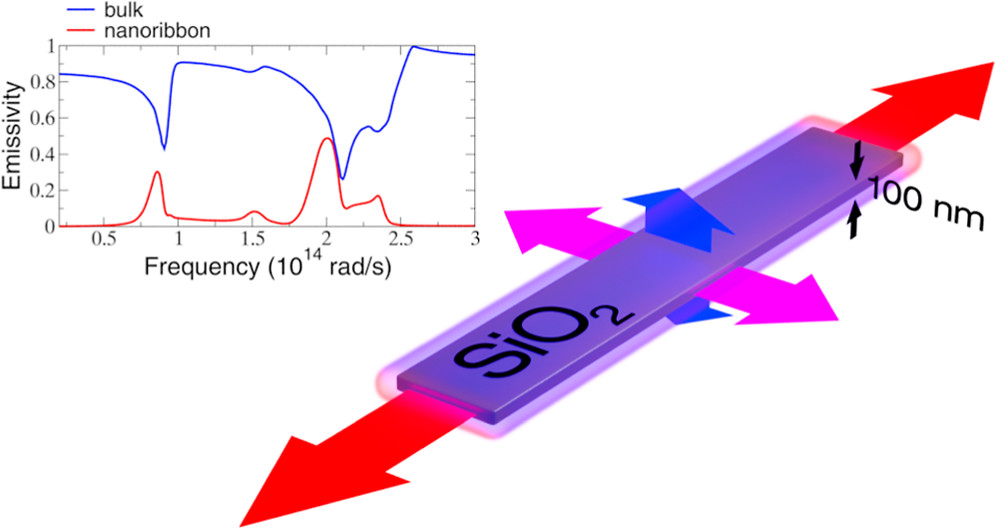Thermal emission of silica nanoribbons
26/10/22 23:15
The thermal properties of individual subwavelength objects, which defy Planck’s law, are attracting significant fundamental and applied interest in different research areas. Special attention has been devoted to anisotropic structures made of polar dielectrics featuring thicknesses smaller than both the thermal wavelength and the skin depth. Recently, a novel experimental technique has enabled the measurement of the thermal emissivity of anisotropic SiO2 nanoribbons (with thicknesses on the order of 100 nm), demonstrating that their emission properties can be largely tuned by adjusting their dimensions. However, despite the great interest aroused by these results, their rigorous theoretical analysis has remained elusive due to the computational challenges arising from the vast difference in the length scales involved in the problem. In this work, we present a systematic theoretical analysis of the thermal emission properties of these dielectric nanoribbons based on simulations within the framework of fluctuational electrodynamics carried out with the boundary element method implemented in the SCUFF-EM code. In agreement with the experiments, we show that the emissivity of these subwavelength structures can be largely tuned and enhanced over the thin-film limit. We elucidate that the peculiar emissivity of these nanoribbons is due to the very anisotropic thermal emission that originates from the phonon polaritons of this material and the properties of the waveguide modes sustained by these dielectric structures. Our work illustrates the rich thermal properties of subwavelength objects, as well as the need for rigorous theoretical methods that are able to unveil the complex thermal emission phenomena emerging in this class of systems.


